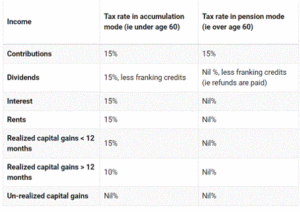Self-managed super funds have grown in popularity over the last several years, as people become more aware of their superannuation investments and where they stand. The GST did no favours for many Australians, and many unsuspecting investors lost huge portions of their superannuation due to the crash. A SMSF allows people to have greater control over their assets than would be possible with industry funds, and for this reason more Australians are switching to the self-managed model.
Since 2007, self-managed super funds have been able to borrow to acquire assets, and this has become quite a popular option for investing in property since then. According to the ATO, as of March 2017 there were over half a million SMSFs in Australia, with a combined asset total of more than $674 billion. in this article, we’ll take a look at what’s involved in buying property within a SMSF.
The regulations
As discussed in our earlier article on property buying structures, purchasing property through a self-managed super fund can present a range of benefits to investors. These include:
- Limiting liability of the parties involved
- Being able to pool resources to purchase the property
- Having greater control over your superannuation
- Having greater borrowing power, by borrowing with multiple parties
- Reducing taxable income by making extra contributions
- Reducing tax on the profits from the asset, if kept until retirement
Needless to say, there are certain drawbacks to using your SMSF to invest in property. These include:
- The arrangement can be expensive and complicated to set up
- There are strict guidelines and steep penalties for doing it wrong
- The asset is not liquid, which can make drawing from it more difficult in retirement
- Acquiring a loan can be more complicated
- You cannot have a personal interest in the property (you cannot lease it to a relative, for example)
- Negative gearing cannot be offset against your personal income tax, only against the income of the SMSF
- You cannot borrow from the SMSF to improve on the property, and so you must account for costs and be sure that it will generate an ongoing income
Weighing up the pros and cons of using a SMSF to purchase property will require advice from your accountant, mortgage broker and solicitor. Once you’ve got the appropriate advice, and have decided to go ahead with the structured purchase, there are a series of steps you’ll need to follow.
It’s also important to consider the tax implications of acquiring property through a SMSF. The table below outlines the tax

How to go about it
The process for buying property through a SMSF is quite involved, but is manageable if broken down into each stage. The process will involve:
- Collecting data on your superannuation balance, past contributions and projected future contributions
- Speaking with a mortgage broker or your bank about your lending capacity and the deposit that will be required.
- Ensuring that your SMSF is set up to allow for property investment, for a trustee to manage the investment, and have a corporate trustee appointed. Once this is complete, have your legal advisors look over the documents and assure you that all is in order.
- Going hunting for the appropriate property.
- Letting your bank/lender know which property has been chosen so that they can complete the necessary valuations etc.
- Get the documents in order with the trustee, so that they may act as the holding trustee of the asset.
- Finalising the mortgage with the lender, and paying applicable fees from the SMSF (never pay personally).
- Arrange to lease the property. Note that the lease will be in the name of the holding trustee, not of the borrower or SMSF.
- Set up banking to have rental payments paid to the SMSF.
- Complete any further taxation paperwork, such as registering the fund for GST if applicable, and arranging for land tax to be paid by the SMSF if applicable.
- Finally, once the loan is repaid, the property can be transferred into the name of the SMSF trustee.
Benefits for business
As you can see, the process of obtaining a property through a SMSF is a complex one. For this reason, there are much higher legal fees involved, and this may deter some buyers from using this structure. For businesses, however, there is another reason to consider using your SMSF to purchase property. While an individual cannot have personal interests in the property purchased through their SMSF, the same does not apply to a business.
Buying commercial property through a SMSF means that you can lease the property to your company. The exception to the ‘related party’ acquisitions rule is referred to as ‘business real property’. Business real property is defined as “land and buildings used wholly and exclusively in a business.“ For example, a mechanic could purchase a workshop (business real property) through their SMSF and then lease the premises to their business. At a later stage, the property could be sold and then leased to the new owner. In some instances, even farming land which contains a dwelling can be classified as business real property. If you operate a business, having yourself as landlord comes with obvious benefits. It also means that the property you’re renting is directly adding to your superannuation investment. Furthermore, as a property owner, your liability is limited under your SMSF, and should you decide to sell or stop operating your business for whatever reason, the asset can then be leased to another tenant who will continue to contribute to your superannuation.
If you’ve considered buying an investment property but aren’t sure how to do it, a SMSF could be a suitable option. Likewise, if you’ve been looking for a way to take more control of your superannuation, this type of investment could be just the solution. Of course, seeking the advice of your solicitor, accountant and mortgage broker is critical. It’s important to be certain of your legal obligations, the correct processes to purchasing through a SMSF, and your capacity to borrow before starting the hunt.



